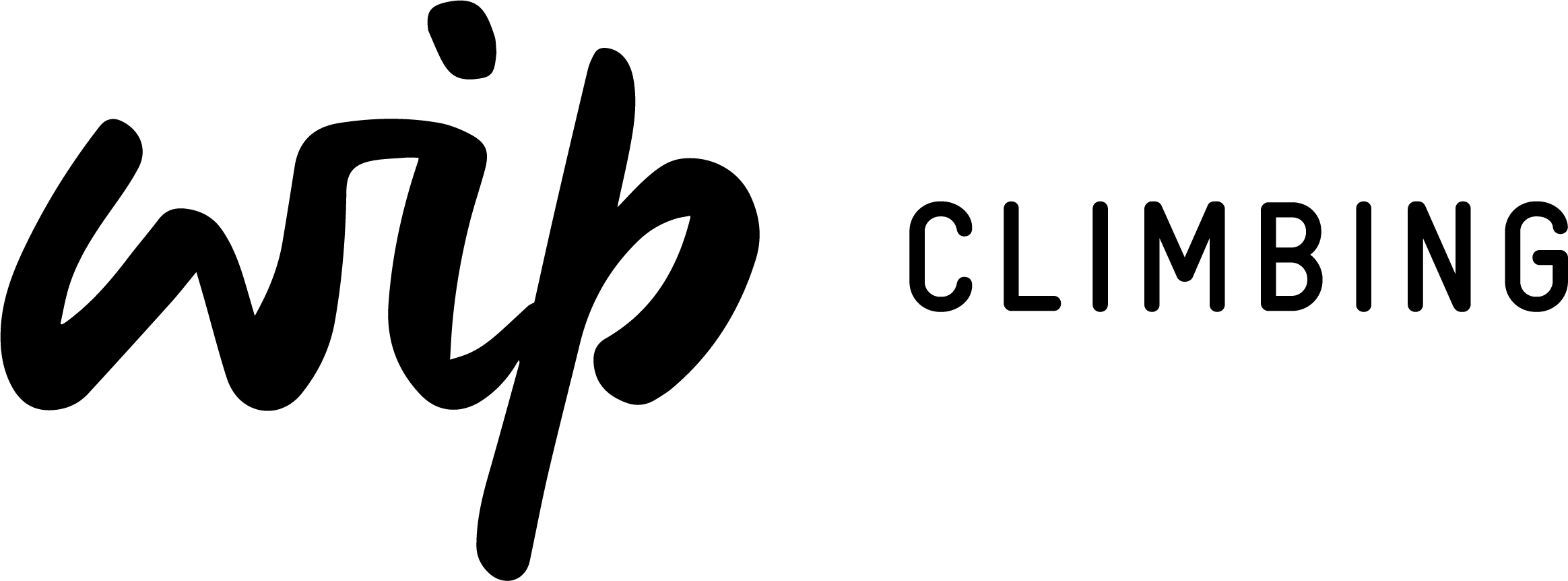Guide to get you started
Climbing, let’s do this.
Break down the walls of intimidation by learning how to walk the walk and talk the talk. This online guide will be your starter pack. Learn how to fall safely, basic etiquette, and some simple body positions that will allow you to climb better than you thought possible.
what to wear
Anything works. Athletic clothing is likely best. Climbing shoes are required (we rent them), chalk is a good idea (we rent that too).
What to bring
Water bottle, snack, good energy, willingness to try new things and make new friends.
The Walls
The walls were designed by owners Josh and Chris. The climbing features found at WIP make the most of the space and provide the best possible terrain to maximize all styles climbing from steep caves to slab walls. Manufactured by Walltopia, the worlds biggest wall builder.
Climbing Holds
Polyurethane or fibreglass shapes that a climber uses to grip onto the wall in order to climb. The specific shape of the hold can make a climb easier or more difficult.
Volumes
Wooden geometric shapes that help change the design of the climbing wall angles, these features are usable by any climber on any route.
Safety Flooring
Our flooring is engineered, manufactured and installed by Flashed Climbing, the leader in climbing safety flooring. Safety is paramount at WIP and we have installed the best flooring on the market.
How to fall bouldering
While falling, don't try to catch yourself with your hands.If you land on your feet, bend your knees, and roll backward onto the padded mat. Avoid trying to push yourself off the wall and/or spinning specifically because your body just won't have enough time to recover from all of that movement, on top of falling. Be observant of your surroundings and look before taking a controlled fall. Most importantly, only climb as high as you feel comfortable, especially in the beginning.
How to fall on a rope
Your belayer should lock you off (not taking in slack) as you climb up a few feet. Now take a fall. Focus on these three aspects of your form:
Look down. Keep your arms and legs shoulder-width apart and bent
Exhale as you fall. Looking down allows you to see your landing zone. A relaxed-but-ready arm and leg position allows you to respond to possible impact with the rock, though that may not actually happen. Exhaling throughout the fall helps you stay relaxed. The longer your fall, the longer your exhale should be.
Big or small, climbing is for everyone
The routes at WIP are defined by two things, the color of the holds on the route and the difficulty of the grade of the route. Grades or difficulty level are scaled on the V-Grade system with V0 being the easiest and V10 being the hardest. The grade tag is colored and marks the start of the route, to climb the route you need to climb up the color of holds defined on the grade tag to the top.
Hold on, but not too tight
Climbing is an exercise in decision making; ask yourself, what is the most effective and efficient way to hold on and move ahead? Try to keep your arms straight to save energy for when you need to pull; don’t over-squeeze. Efficiency is the key.
Foot work and body position
‘Climb with your feet and not with your hands’ is a common phrase. This is only partly true, the steeper the wall the more you need to rely on your hands. That said, your feet help put your body in the correct position to move, so always focus on your feet.











